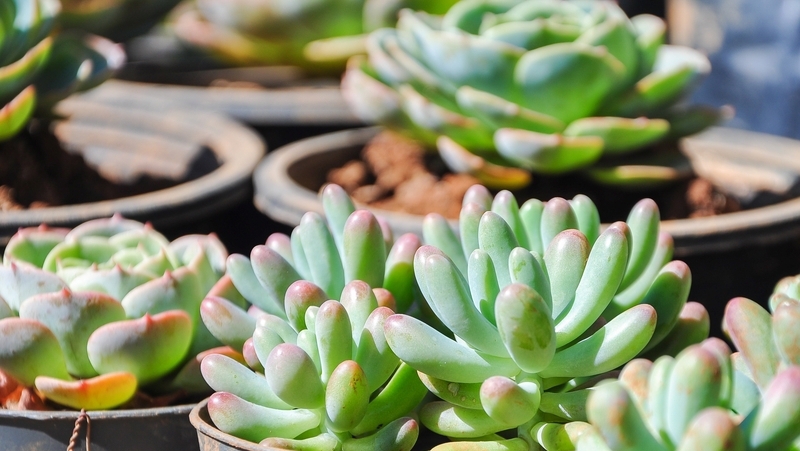Yates Account
Join now
Create a Yates account today!
Sign up to join the Yates Garden Club for monthly e-mails packed with seasonal inspiration, tips for success & exclusive promotions.
Plus if you’re a Garden Club member you can take part in the Yates Growing Community - a blog to share successes, get advice & win prizes in fun challenges along the way!

Forgot password
Enter the email address associated with your account, and we'll email you a new password.

If you’re happy and you know it, plant some beans. But not just any ol’ beans - jelly beans (Sedum rubrotinctum)! Their chubby little leaves with tinges of red or pink just scream to be pinched every time you pass them. Great for pots, open terrariums or on their own in a glass jar. It is hard to resist the joy these little jelly beans provide.
How to grow jelly beans in your garden
- Choose a partly shaded to sunny spot in the garden, that has well-drained soil and is sheltered from afternoon sun. Enrich the soil with Yates Thrive Natural Blood & Bone with Seaweed. If the soil is clay based, add gypsum and fork in well.
- Dig the planting hole twice as wide and to the same depth as the root-ball. Remove the plant from the container, gently tease the roots.
- Position in hole and backfill with soil, gently firming down. Always water in well after planting to settle the soil around the roots and keep the soil lightly moist for several weeks while the new plant establishes.
- Mulch with an organic mulch, or stones and pebbles ensuring to keep it away from the base of the plant.
- Water regularly allowing the soil to dry out between watering.
- Feed your succulent every month from Spring to Autumn with Yates Thrive Natural Fish Seaweed+ Plant Food Concentrate.

How to grow jelly beans in a pot
- Choose a pot just deeper than the existing root-ball and position indoors in an area that receives part shade to full sun, but is sheltered from the harsh afternoon sun.
- Partially fill the pot with quality, free-draining mix, like Yates Thrive Cacti Succulent Potting Mix.
- Remove the plant from the container, gently tease the roots.
- Position in hole and backfill with potting mix, gently firming down. Water in lightly.
- Feed lightly with Yates Thrive Plant Food Spikes Cacti & Succulents in Spring.
Growing tips
- Perfect for terrariums, in mixed plantings or as a specimen plant.
- Jelly beans can be easily propagated through cuttings and through leaf propagation. When propagating, ensure that you allow the ends of the leaves or stems to dry out slightly prior to placing in a good quality seed raising mix.
Zygocactus come in many colours and put on one of the most striking floral displays of any plant.
Yucca
Yuccas are striking plants that make a strong impact in the garden. Flowers are commonly white & held on strong stems above the foliage.
Rhipsalis
There is no plant like the Rhipsalis with long cascading green stems create an instant green waterfall wherever they are placed in the home.
Pig Face
Pigface provide an abundance of bright and cheerful flowers in Spring, they also play an important role as a soil stabiliser around our beaches.
Recommended products
Yates Thrive Natural Blood & Bone with Seaweed
A certified organic garden input boosted with NZ Seaweed to gently nourish plants, enrich the soil and encourage a strong healthy root system.
Yates Thrive Natural Fish & Seaweed+ Plant Food Concentrate
A complete plant food enriched with natural fish, seaweed, humates, molasses and more - boosted with NPK to improve plant and soil vitality.
Yates Thrive Cacti & Succulent Potting Mix
Specifically formulated for the successful growing of cacti and succulents, both indoors in pots and outdoors in the garden bed or pots.
Yates Thrive Plant Food Spikes Cacti & Succulents
Yates Thrive Plant Food Spikes Cacti & Succulents are specially designed to feed your cacti & succulents where they need it most, at the roots.
















Share
Share this article on social media